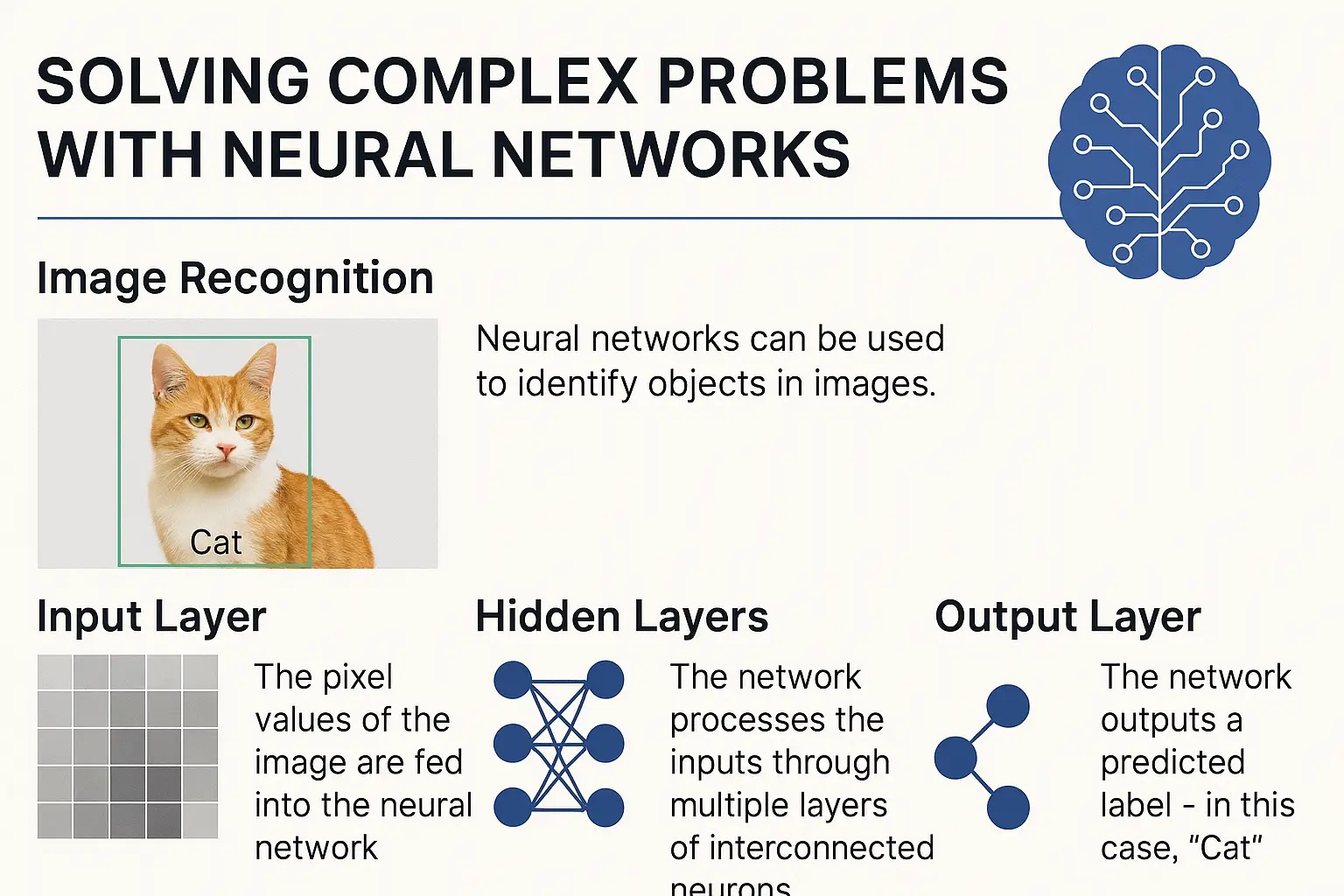How Neural Networks Solve Complex Image Recognition Problems
Neural networks are a transformative tool in the field of machine learning and artificial intelligence, especially for solving complex problems such as image recognition. By mimicking the human brain’s structure, neural networks are able to process and classify vast amounts of data, making them highly effective for identifying objects, faces, or patterns within images.

Neural networks work by passing an image through multiple layers of artificial neurons, each layer learning to identify specific features of the image. This is how it works:
1. Input Layer:
The first step is to input the image into the neural network. The image is broken down into pixel values, which are fed into the network. These values are typically represented in a grid format, with each pixel’s color or intensity being captured in a numerical format. For example, an image of a cat would be translated into its pixel values, which form the input to the neural network.
2. Hidden Layers:
Once the pixel data enters the network, it passes through several “hidden layers.” These layers consist of neurons that perform various computations on the image data. The neurons in the hidden layers analyze different features of the image, such as edges, shapes, or textures. With each passing layer, the network gets better at detecting patterns and associations within the data.
3. Output Layer:
After passing through the hidden layers, the data reaches the output layer. Here, the network classifies the image based on the features it has learned. For instance, in the case of a cat image, the network might output the label “cat” with a certain confidence level. The output layer essentially tells the network what object is present in the image, whether it’s a cat, a dog, or something else.
Benefits of Neural Networks for Image Recognition
Accuracy: Neural networks can achieve high accuracy in identifying objects in images, even when the images are noisy or partially obscured.
Automation: Neural networks automate the process of image classification, which saves time and reduces the need for manual tagging or labeling.
Scalability: Once trained, neural networks can handle large datasets, making them ideal for use in applications like facial recognition, medical imaging, and autonomous vehicles.
Real-World Applications
Neural networks are used in various industries for solving image recognition challenges. Some of the most common applications include:
Autonomous Vehicles: Self-driving cars use image recognition powered by neural networks to detect objects on the road, such as pedestrians, other vehicles, and traffic signs.
Healthcare: In medical imaging, neural networks help in detecting diseases like cancer by analyzing X-rays, MRIs, and CT scans.
Security: Facial recognition systems use neural networks to identify individuals in a crowd or verify identity for security purposes.
In conclusion, neural networks are revolutionizing image recognition by leveraging their ability to analyze complex data and provide highly accurate results. They are helping industries solve problems that were once considered too difficult for traditional computer systems.

